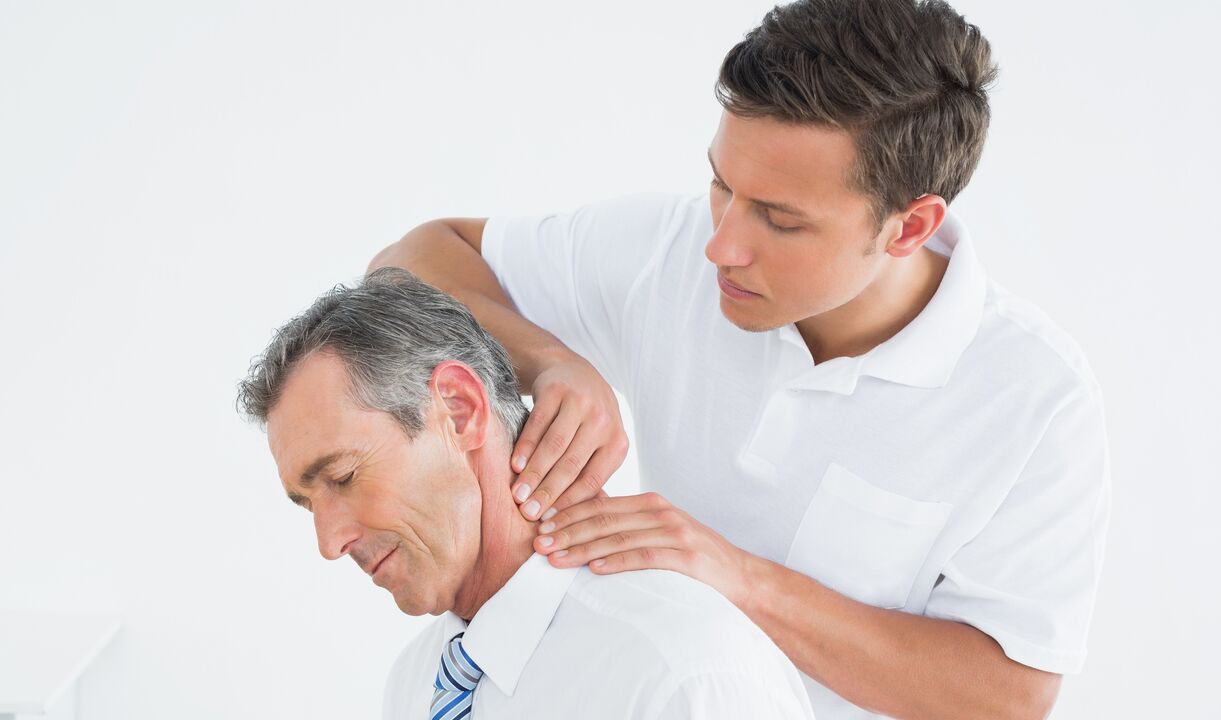Back and neck injuries, heavy physical exertion, inactive lifestyle, pregnancy, old age - all these are the causes of spinal diseases, the support of the human body. The symptoms of osteochondrosis, cervical, thoracic or lumbar, are different, so any, even subtle signs, should not be ignored. The sooner treatment begins, the sooner recovery will come. If you notice the first manifestations of the disease in yourself, consult a doctor and undergo an examination.
What is osteochondrosis
One of the most diagnosed spinal diseases is osteochondrosis, the symptoms of which are found in every 3rd person after 35 years. It mainly affects the elderly with overweight, former athletes or employees whose professional activities are associated with heavy loads. According to statistics of recent years, it is clear that the disease is getting younger. Girls and men who prefer to lead an inactive lifestyle no longer surprise doctors with complaints of back pain.
Osteochondrosis is a disease of the spine, in which there are degenerative-dystrophic lesions of the intervertebral disc. If left untreated, destruction of the vertebrae itself begins, leading to deformity, atrophy and paralysis of the limb. Such problems can also lead to spinal cord stroke, sciatica, kyphosis, protrusion. At the first signs of illness, you should seek help from a doctor.
Each stage of this spinal dystrophic disorder is characterized by its own symptoms and signs. There are four levels in total. In the first stage, pathological changes occur, expressed in dehydration and a decrease in the height of the intervertebral disc. In the latter, sagging of the vertebral muscles and ligaments is repaired, spondylolisthesis is diagnosed (displacement, curvature of the disc). The third stage is characterized by the appearance of prolapse and protrusion of the disc. In the last stage, vertebral deformation occurs, in which bone growth - osteophytes grow.
symptoms
The signs and symptoms of osteochondrosis depend on its stage of development. The type of disease also plays an important role. Osteochondrosis affects different parts of the spine: cervix, thorax, lumbar. Some patient symptoms may not be associated with the spine, for example, heart or headache, numbness of fingers and toes. The patient at the same time complained that the neck was sore or poked in the chest. It is very important to get help from the hospital. Treatment of the disease lasts about 3 months, plus a year is given for recovery.
The most common symptoms of osteochondrosis:
- back pain between shoulder blades;
- dizziness;
- a feeling of lumps in the throat;
- nausea;
- loss of sensation in the limbs;
- high temperature;
- numb limbs.

Cervical osteochondrosis
If we consider the symptoms according to the type of disease, then the problem with the cervical vertebrae is dangerous because it is close to the brain. Here there is a partial overlap of the blood vessels that carry blood to the head. Symptoms of osteochondrosis of the cervical spine are:
- dizziness;
- turbidity in the eyes;
- noise in the ears;
- "drift" when walking;
- pain in the back of the head, arms, shoulders.
Osteochondrosis of the thorax
This type of disease affects the heart, as a result of which patients begin to complain of symptoms such as:
- pain in chest, back, shoulders;
- heartache;
- angina;
- sensation of lumps in the throat;
- shortness of breath attacks;
- difficulty breathing;
- numb hands and feet.
Lumbar osteochondrosis
Diseases affecting the lower spine lead to problems with the pelvic organs. Impaired sexual function. The signs of lumbar osteochondrosis are:
- pain in the coccyx, sacrum, lower back;
- muscle spasms of the thighs, calves, back;
- shoot in the leg;
- limb numbness;
- poor joint mobility;
- exacerbation of diseases of the genitourinary system.

Symptoms of osteochondrosis travel
This concept means osteochondrosis, which develops in two parts of the spine, for example, a type of cervicothoracic disease. In this case, the patient will feel painful symptoms that appear first in one place of the back, then in another place, i. e. the location of the pain will move. In this case, the patient can diagnose a violation of the cardiovascular system and even take medication to treat this problem, which can not be done without a medical examination.
Signs of osteochondrosis
Depending on what affects the disease, doctors distinguish four groups of syndromes, each of which is characterized by its own symptoms. The osteochondrosis syndrome is as follows:
- static syndrome. This concept refers to changes in the shape of the spine. There is a violation of posture: one begins to bend, bend, lower one shoulder below the other. Scoliosis appears.
- neurological syndrome. The disease affects the nervous system. The man complained of tingling, numbness. Neurological symptoms develop into complications in the form of paralysis or seizures.
- vascular syndrome. Here we are talking about squeezing the vessels with the vertebral process. This condition is often observed in the cervical form of the disease. The result is a violation of blood circulation, oxygen starvation of the brain, which leads to turbidity, dizziness, nausea, loss of hearing and vision. With thoracic or lumbar osteochondrosis, chronic ischemia of internal organs is observed.
- trophic syndrome. It is characterized by inadequate tissue nutrition with essential substances. As a result, ulcers, inflammation and other defects appear on the skin.

The first signs of osteochondrosis
In the early stages of the disease, as well as in the latter, the patient does not experience any discomfort. Only a doctor can identify problems at this stage of development, for example, when diagnosing another disease or during a medical examination. The diagnostic methods are as follows:
- x-ray of the spine in two projections, if necessary, x-ray of a single vertebra;
- magnetic resonance imaging (determination of intervertebral disc herniation, assessment of spinal cord condition);
- discography (examination of the intervertebral disc);
- electrophysical examination (determination of the degree of damage to nerve pathways).























